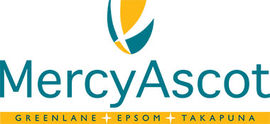Central Auckland, East Auckland, South Auckland, West Auckland, North Auckland > Private Hospitals & Specialists > MercyAscot >
MercyAscot Vascular Surgery
Private Surgical Service, Vascular Surgery, General Surgery
Description
Our one-stop wound assessment clinics are for your private and ACC patients with lower limb venous, arterial, and diabetic foot wounds, and provide an uninterrupted journey to better health.
The MercyAscot Vascular Wound Clinics are a partnership between MercyAscot, Mercy Radiology and Auckland Vascular Ltd.
Why refer to us?
We are committed to working closely with you to heal wounds, educate your patients, and prevent recurrence. We are the only Southern Cross Affiliated Provider integrated vascular wound service.
We work with ACC to provide your patients with a service that will help them through their treatment and rehabilitation pathway. As an ACC-contracted provider of Specialist Wound Care assessment and treatment Auckland Vascular can offer specialist assessment for all your patients with high risk (especially diabetic foot) wounds. Also has the ability to link suitable patients to the Auckland Regional Multi-Disciplinary Diabetic Foot Service - for which Venu Bhamidi is the clinical lead.
Benefits to patients
- Multi-disciplinary team at every clinic
Vascular Surgeon, Sonographer, Vascular Nurse, Wound Care Nurse Specialist and Physician/Diabetologist (when needed) - Comprehensive diagnostic service
What do we treat and how
Wounds treated at our clinics include:
- Diabetic foot wounds
- Arterial
- Venous
- Neuropathic
- Pressure
- Mixed etiology
- Complex soft tissue.
With us your patients’ care involves:
- Initial complete vascular examination to identify the underlying cause of the wound
- Review of the major co-morbidities
- Wound care assessment & plan
- Non-invasive lower limb arterial assessment (including ABIs)
- Venous/Arterial lower limb ultrasound
- Wound biopsy where indicated
- Liaison with the primary care physician/nurse and/or district nurses to co-ordinate ongoing management.
Consultants
-

Dr Russell Bourchier
Vascular Surgeon
-

Dr Carl Muthu
Vascular Surgeon
-

Dr Peter Vann (Vanniasingham)
Vascular Surgeon
Procedures / Treatments
Endovascular therapy: a long thin tube (catheter) is inserted through a small incision (cut) made in the groin in the groin. The catheter is guided to the site of the aneurysm and a graft (synthetic tube) or stent (a metal tube) is put in place to relieve the pressure on the aneurysm. Conventional: an incision is made in the abdomen or chest and the weakened part of the aorta is replaced with a graft.
Endovascular therapy: a long thin tube (catheter) is inserted through a small incision (cut) made in the groin in the groin. The catheter is guided to the site of the aneurysm and a graft (synthetic tube) or stent (a metal tube) is put in place to relieve the pressure on the aneurysm. Conventional: an incision is made in the abdomen or chest and the weakened part of the aorta is replaced with a graft.
Endovascular therapy: a long thin tube (catheter) is inserted through a small incision (cut) made in the groin in the groin. The catheter is guided to the site of the aneurysm and a graft (synthetic tube) or stent (a metal tube) is put in place to relieve the pressure on the aneurysm.
Conventional: an incision is made in the abdomen or chest and the weakened part of the aorta is replaced with a graft.
Carotid Endarterectomy: an incision (cut) is made along the side of the neck, the carotid artery opened and the fatty material (plaque) removed. The artery is closed with a patch. Minimally invasive: a long thin tube (catheter) is inserted through a small incision made in the groin. The catheter is guided to the carotid artery where a balloon attached to the catheter is inflated to clear the blockage or a small metal tube (stent) is put in place to hold the blood vessel open.
Carotid Endarterectomy: an incision (cut) is made along the side of the neck, the carotid artery opened and the fatty material (plaque) removed. The artery is closed with a patch. Minimally invasive: a long thin tube (catheter) is inserted through a small incision made in the groin. The catheter is guided to the carotid artery where a balloon attached to the catheter is inflated to clear the blockage or a small metal tube (stent) is put in place to hold the blood vessel open.
Carotid Endarterectomy: an incision (cut) is made along the side of the neck, the carotid artery opened and the fatty material (plaque) removed. The artery is closed with a patch.
Minimally invasive: a long thin tube (catheter) is inserted through a small incision made in the groin. The catheter is guided to the carotid artery where a balloon attached to the catheter is inflated to clear the blockage or a small metal tube (stent) is put in place to hold the blood vessel open.
Balloon Angioplasty: a long thin tube (catheter) with a tiny balloon attached to the tip is inserted through a small incision (cut) made over an artery in your arm or groin. The catheter is guided through the arteries to the site of the blockage where the balloon is inflated to clear the blockage and, in some cases, a metal tube (stent) is inserted into the artery to keep it open. Endarterectomy: incisions are made in the affected limb and artery and the fatty material (plaque) in the blood vessel is removed. Bypass Surgery: a piece of a vein from another part of the body or a tube made of synthetic material (graft) is used to join the artery above and below the narrowed or blocked section. This creates a detour and a new path for the blood to flow around the blocked segment.
Balloon Angioplasty: a long thin tube (catheter) with a tiny balloon attached to the tip is inserted through a small incision (cut) made over an artery in your arm or groin. The catheter is guided through the arteries to the site of the blockage where the balloon is inflated to clear the blockage and, in some cases, a metal tube (stent) is inserted into the artery to keep it open. Endarterectomy: incisions are made in the affected limb and artery and the fatty material (plaque) in the blood vessel is removed. Bypass Surgery: a piece of a vein from another part of the body or a tube made of synthetic material (graft) is used to join the artery above and below the narrowed or blocked section. This creates a detour and a new path for the blood to flow around the blocked segment.
Balloon Angioplasty: a long thin tube (catheter) with a tiny balloon attached to the tip is inserted through a small incision (cut) made over an artery in your arm or groin. The catheter is guided through the arteries to the site of the blockage where the balloon is inflated to clear the blockage and, in some cases, a metal tube (stent) is inserted into the artery to keep it open.
Endarterectomy: incisions are made in the affected limb and artery and the fatty material (plaque) in the blood vessel is removed.
Bypass Surgery: a piece of a vein from another part of the body or a tube made of synthetic material (graft) is used to join the artery above and below the narrowed or blocked section. This creates a detour and a new path for the blood to flow around the blocked segment.
Balloon Angioplasty: a long thin tube (catheter) with a tiny balloon attached to the tip is inserted through a small incision (cut) made in your groin. The catheter is guided through the arteries to the site of the blockage where the balloon is inflated to clear the blockage and, in some cases, a metal tube (stent) is inserted into the artery to keep it open. Endarterectomy: an incision is made over the artery, the artery opened and the fatty material (plaque) removed. Bypass Surgery: a piece of a vein from another part of the body or a tube made of synthetic material (graft) is used to join the artery above and below the narrowed or blocked section. This creates a detour and a new path for the blood to flow around the blocked segment.
Balloon Angioplasty: a long thin tube (catheter) with a tiny balloon attached to the tip is inserted through a small incision (cut) made in your groin. The catheter is guided through the arteries to the site of the blockage where the balloon is inflated to clear the blockage and, in some cases, a metal tube (stent) is inserted into the artery to keep it open. Endarterectomy: an incision is made over the artery, the artery opened and the fatty material (plaque) removed. Bypass Surgery: a piece of a vein from another part of the body or a tube made of synthetic material (graft) is used to join the artery above and below the narrowed or blocked section. This creates a detour and a new path for the blood to flow around the blocked segment.
Balloon Angioplasty: a long thin tube (catheter) with a tiny balloon attached to the tip is inserted through a small incision (cut) made in your groin. The catheter is guided through the arteries to the site of the blockage where the balloon is inflated to clear the blockage and, in some cases, a metal tube (stent) is inserted into the artery to keep it open.
Endarterectomy: an incision is made over the artery, the artery opened and the fatty material (plaque) removed.
Bypass Surgery: a piece of a vein from another part of the body or a tube made of synthetic material (graft) is used to join the artery above and below the narrowed or blocked section. This creates a detour and a new path for the blood to flow around the blocked segment.
Sclerotherapy: a tiny needle is used to inject a chemical solution into the vein that causes the vein to collapse. This approach is recommended for small varicose veins only. Vein stripping: the varicose veins are cut out and the veins that branch off them are tied off. The cuts (incisions) made in the skin are closed with sutures. Phlebectomy: small cuts (incisions) are made in the leg and the varicose veins are pulled out with a tiny hook-like instrument. The cuts are closed with tape rather than sutures and, once healed, are almost invisible.
Sclerotherapy: a tiny needle is used to inject a chemical solution into the vein that causes the vein to collapse. This approach is recommended for small varicose veins only. Vein stripping: the varicose veins are cut out and the veins that branch off them are tied off. The cuts (incisions) made in the skin are closed with sutures. Phlebectomy: small cuts (incisions) are made in the leg and the varicose veins are pulled out with a tiny hook-like instrument. The cuts are closed with tape rather than sutures and, once healed, are almost invisible.
Sclerotherapy: a tiny needle is used to inject a chemical solution into the vein that causes the vein to collapse. This approach is recommended for small varicose veins only.
Vein stripping: the varicose veins are cut out and the veins that branch off them are tied off. The cuts (incisions) made in the skin are closed with sutures.
Phlebectomy: small cuts (incisions) are made in the leg and the varicose veins are pulled out with a tiny hook-like instrument. The cuts are closed with tape rather than sutures and, once healed, are almost invisible.
Disability Assistance
Wheelchair access, Mobility parking space
Parking
Mobility parking and wheelchair access are available. Click on the links for details at:
Mercy Hospital
Ascot Hospital
Website
Contact Details
Ascot Hospital, 90 Green Lane East, Remuera, Auckland
Central Auckland
-
Phone
(09) 520 9500
-
Fax
(09) 520 9501
Website
90 Green Lane East
Remuera
Auckland
Street Address
90 Green Lane East
Remuera
Auckland
Was this page helpful?
This page was last updated at 1:05PM on January 25, 2023. This information is reviewed and edited by MercyAscot Vascular Surgery.

